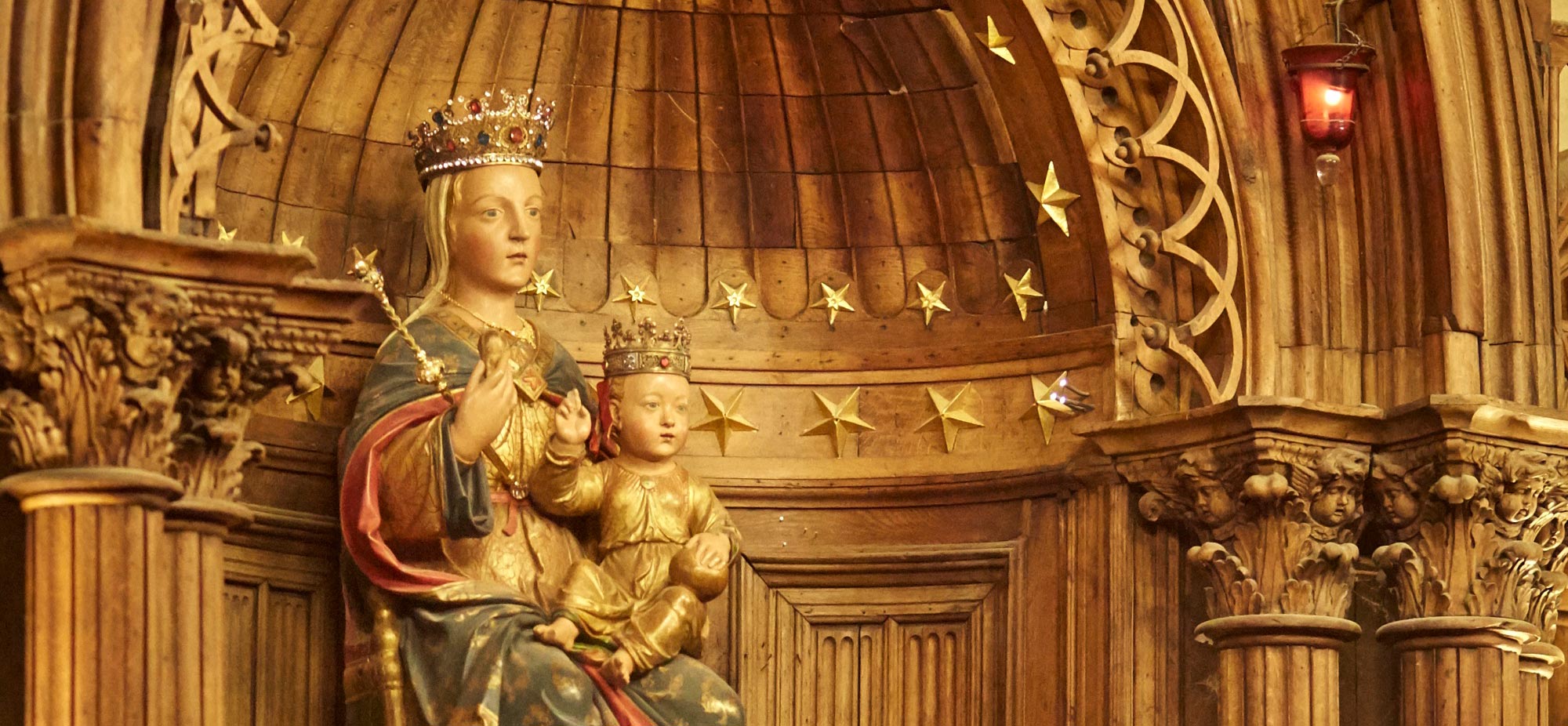
Major place of devotion, about which we often hear some approximations.
To address our readers’ questions, here is a brief historical summary as published in the Notre-Dame de Chartres magazine.
“This name, which dates only from the last century, refers to a wooden image of the Virgin Mother carved shortly after 1500. But if its history is well known to scholars, its prehistory, which is less so, allows us to go back three centuries.
The pilgrims who flocked to the cathedral at a time when the present building was still new, and even unfinished, came to venerate, above all, Notre-Dame’s “holy mantle”, enclosed in a shrine that was always closed and kept on the high altar. But an invisible relic doesn’t entirely satisfy the demands of popular devotion: in such cases, an image is very useful. The Church has always encouraged the worship of images and condemned the heresy of the iconoclasts.
History doesn’t tell us whether there was a statue of the Virgin Mother in the cathedral burnt down in 1194, but we do know that, as early as 1220, when the present choir was given over to worship, a statue of Mary, seated and holding the infant Jesus on her lap, was placed at the foot of the crucifix dominating the high altar. This statue was a gift from Canon Pierre de Bordeaux. It is depicted, albeit conventionally, in one of our stained glass windows (behind Notre-Dame du Pilier, right-hand “lancet”). In 1889-1890, the personality of the stained-glass donor was the subject of a lively controversy between Abbé Clerval and a Chartres archaeologist, Fernand de Mély, who was accustomed to making sweeping assertions and stubbornly supporting questionable hypotheses. From the discussion emerged the light: as Abbé Clerval established, the stained glass window was donated before 1242 by Étienne Chardonel, canon of Paris. A forgotten controversy, but evoked – for those in the know – by the name of Fernand de Mély, which can be found at Notre-Dame de Sous-Terre on an ex-voto donated in 1869 “by a grateful bachelor”. [Editor’s note: the ex-voto has been removed but preserved ].
The statue was made of wood covered in silver leaf. A contemporary and quite similar work can help us to picture it: the beautiful Vierge d’Evron, which we admired at an exhibition in Paris a few years ago. As for our own, it disappeared before the French Revolution, the precious metal on it having been sold – alas! – to contribute to the cost of converting the sanctuary.
By this time, however, it had long ceased to be the object of veneration by the faithful. The somewhat indiscreet devotion of pilgrims, who entered the sanctuary at all hours, displeased the canons of the early 16th century. They decided to direct them to another image, similar to the one on the high altar, but placed in the nave, in front of the rood screen, on the Gospel side. So a new, less precious statue was made in polychrome wood. It was donated by a member of the chapter, named Wastin des Feugerets (pronounced: Vâtin des Fugerets). The event is reported in Roulliard’s Parthénie, published in 1609; it took place, says this author, “a hundred years ago or thereabouts”, a fact which concurs with what we read in the canon’s will (January 1507-1508), under the terms of which he bequeaths a sum to maintain a lamp in front of the image of the Virgin.
This document tells us that Wastin des Feugerets was a wealthy and benevolent man. It also reveals the delicacy of his heart: ‘I similarly leave to the fabrique of Saint-Laurens (from Nogent-le-Rotrou)… one of my sainctures trimmed with silver gilt and my fermillet, to be given to the poor girls when they are married, mainly from the parish, and that they be preferred to the estranges, so that the poor girls pray for me…’ (Arch. Dép. d’E.-et-L. -G 1472). The same document tells us that he was baptized at Notre-Dame de Nogent-le-Rotrou (it’s a town, near Chartres).
When the rood screen was demolished (1763), the Virgin, with the column supporting her, was transferred to the north-west pillar of the transept square, looking, as before, towards the nave.”
to be continued…